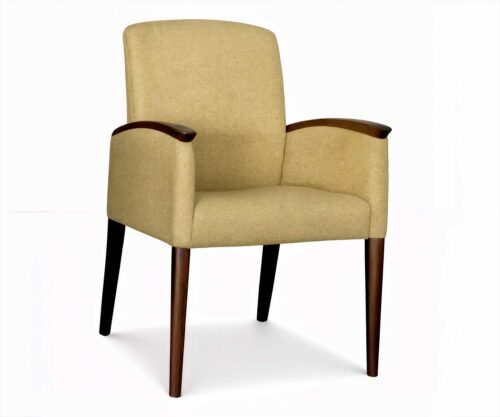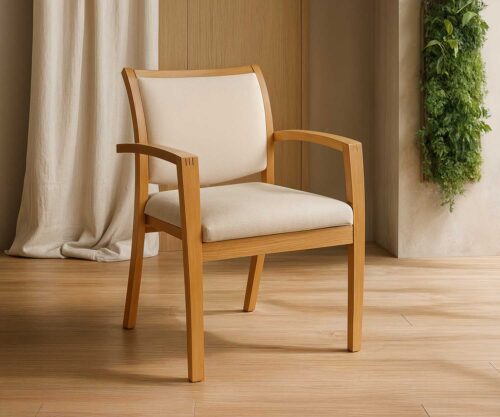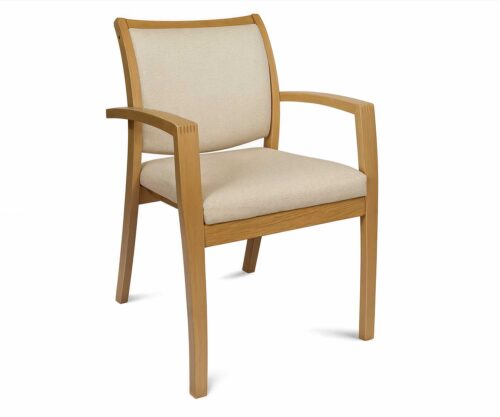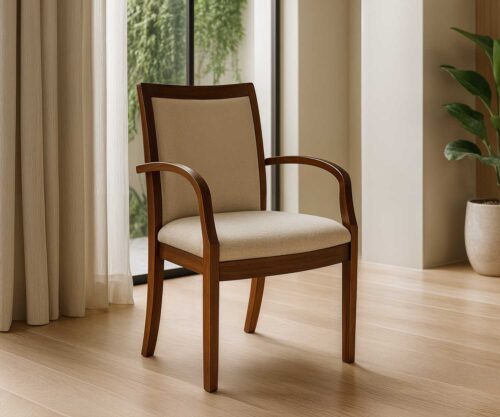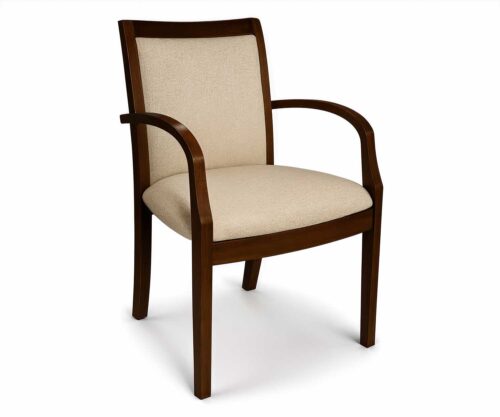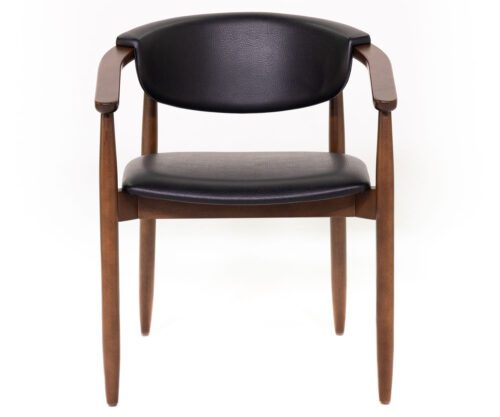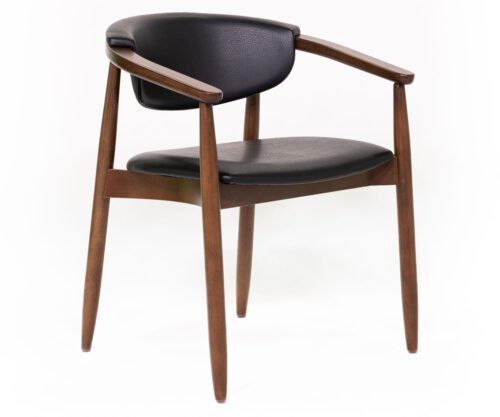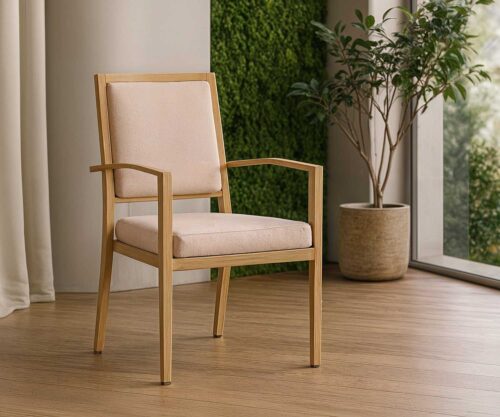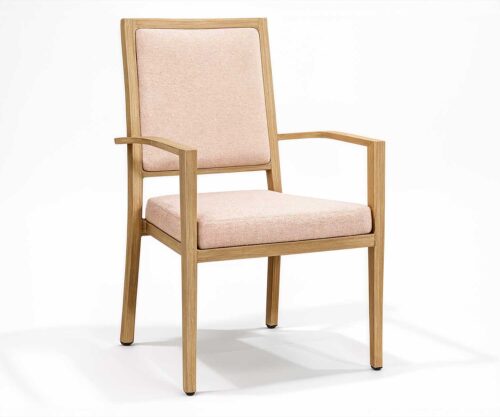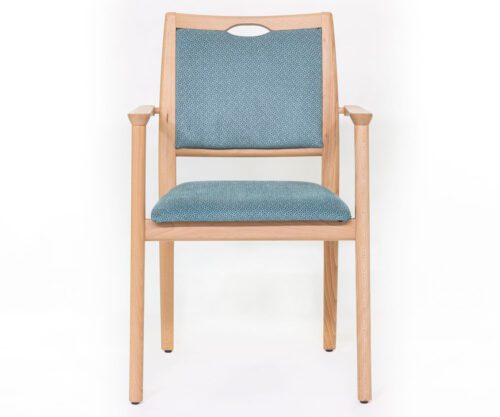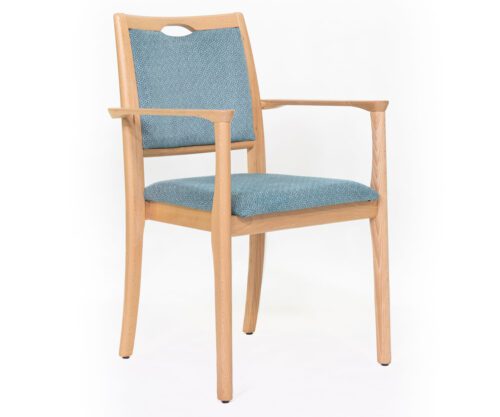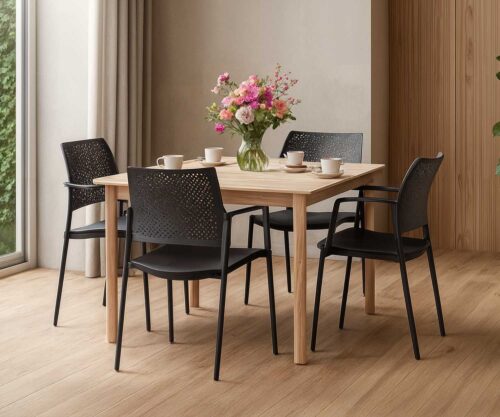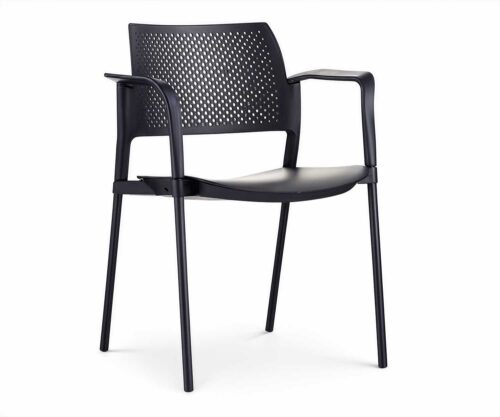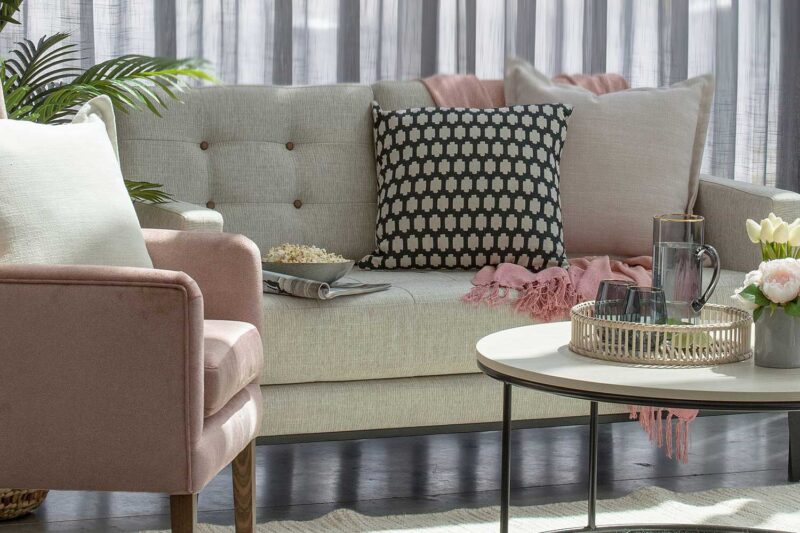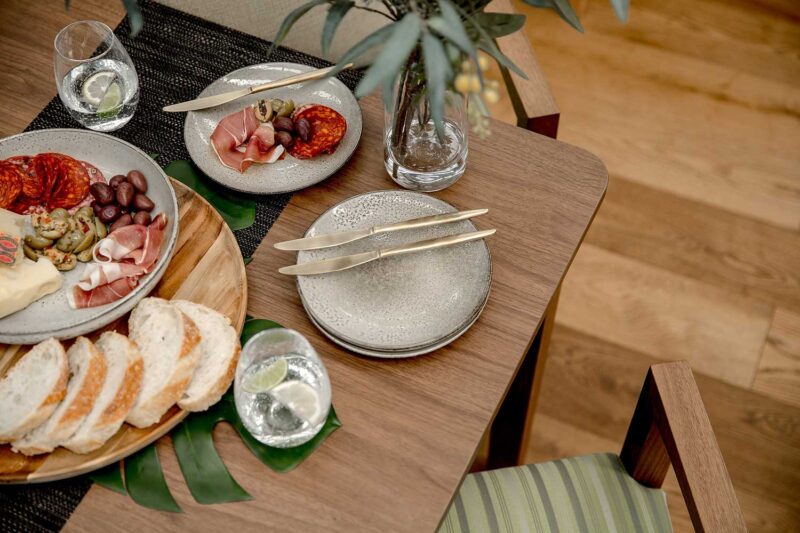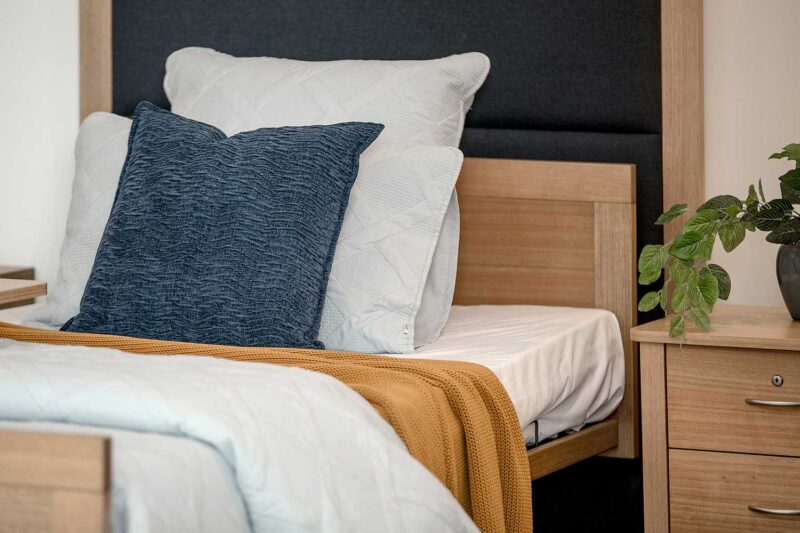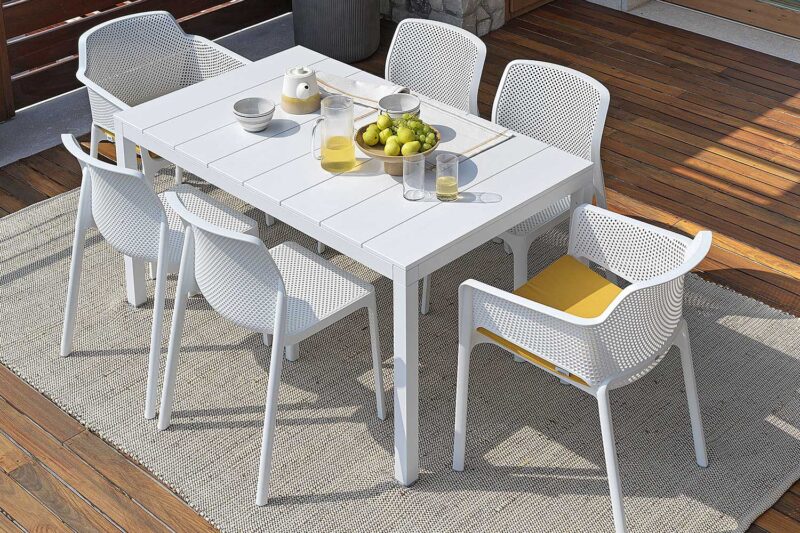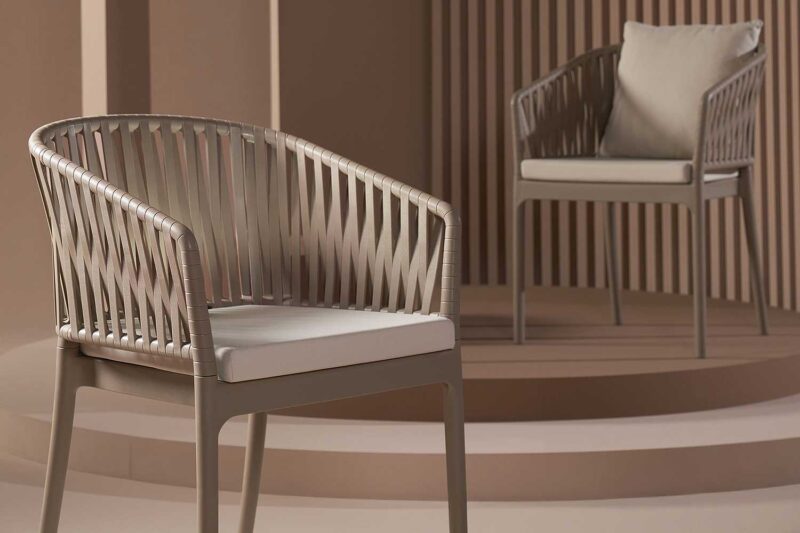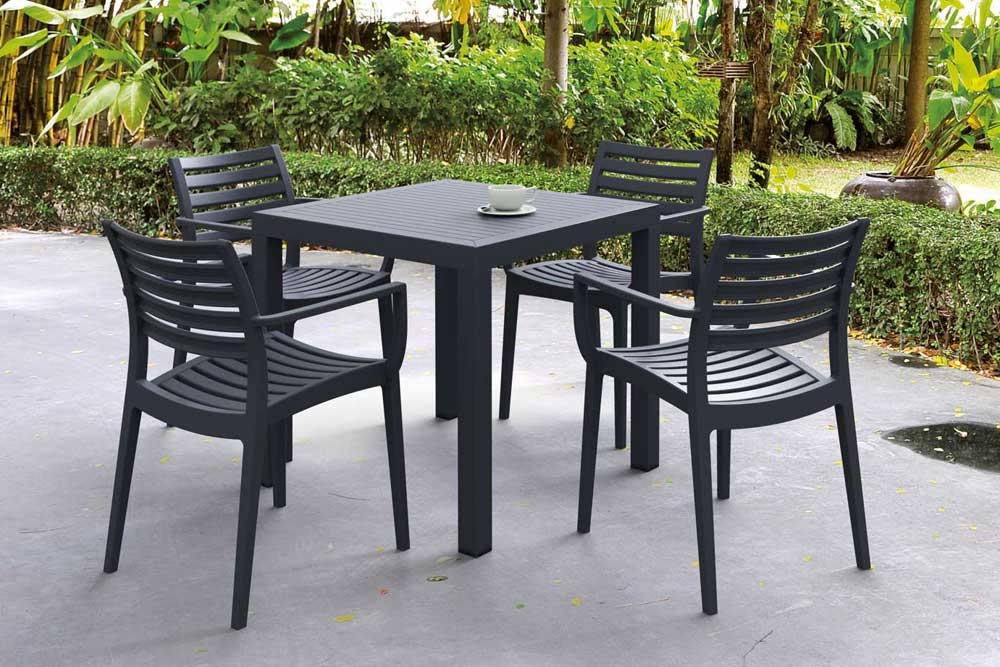Getting the Aged Care Dining Experience Right: It’s more than just choosing the right aged care dining chairs and tables
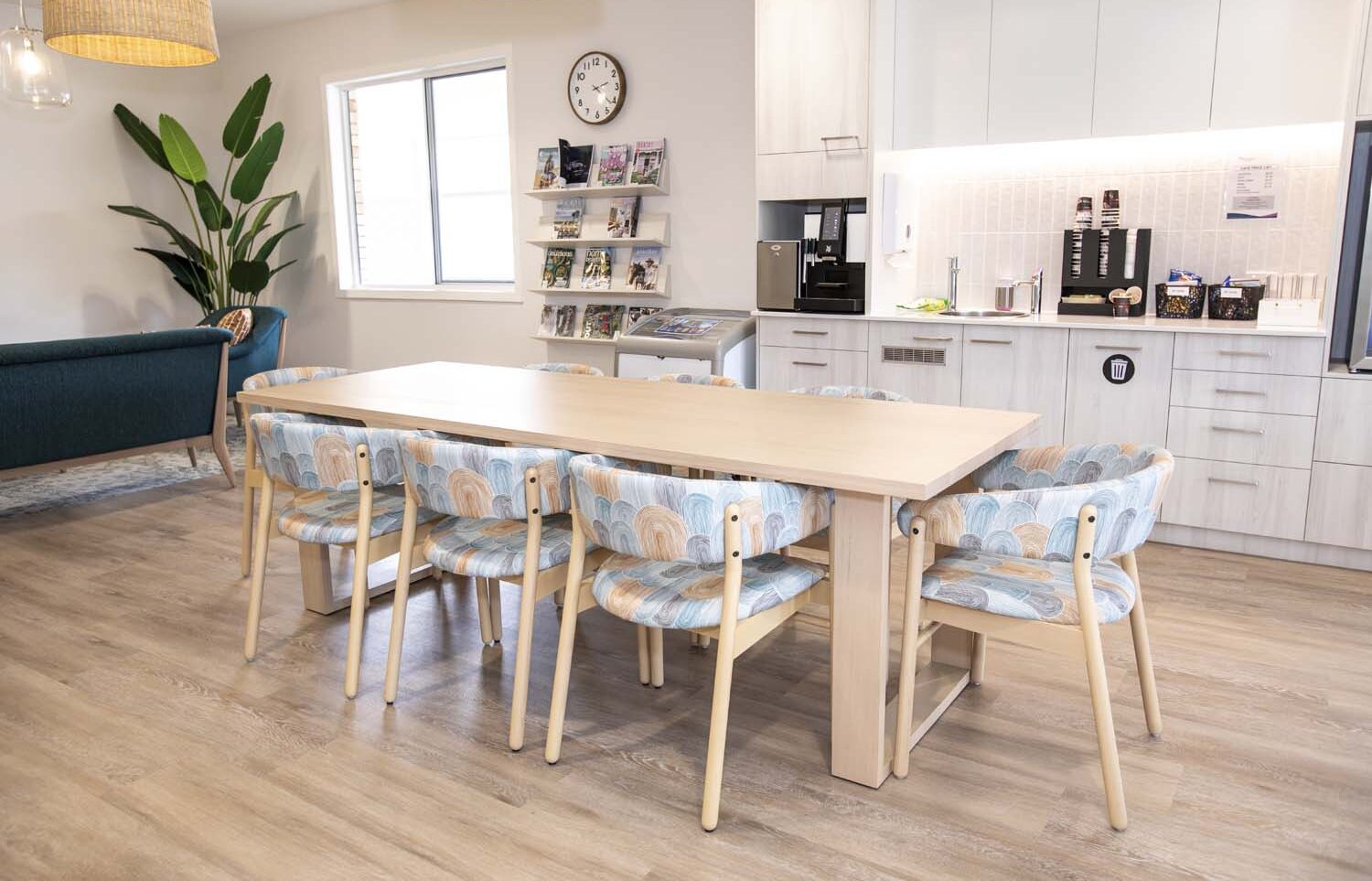
Getting the aged care dining experience right is more than just choosing fit-for-purpose dining furniture.
A quality aged care dining experience is vitally important to the health and wellbeing of residents. For many, this is their only opportunity to consume food and fluids to provide nourishment.
As an Australian furniture manufacturer, we partner with Australian aged care facilities to handcraft quality custom-made aged care dining chairs and tables. We take this task seriously and each dining chair and dining table is fit-for-purpose, designed and manufactured with the needs of the elderly in mind.
While our priority is designing and manufacturing high-quality dining furniture, we also consider the full aged care dining experience. This includes how our furniture will contribute to an overall satisfying dining experience.
Choosing the right furniture to enhance the aged care dining experience
Let’s begin by exploring the features of fit-for-purpose dining furniture which will assist in contributing to a comfortable, safe, and clean aged care dining experience.
When considering dining chairs, it’s recommended to choose a sturdy chair, featuring robust armrests with sufficient grip to aid in sit-to-stand transfers.
In terms of seat height, research conducted by the Queensland University of Technology indicates that residents prefer chairs that are above the recommended height for older people. This is so that they will be able to get out of them more easily, addressing the practical aspect of sit-to-stand transitions.
Other dining chair features to consider are firm seat cushions with smooth, attractive upholstery, such as flat pile or vinyl, with a protective treatment applied to ensure chairs are easy to clean.
Some things to avoid in dining chairs, which lead to discomfort and difficulty cleaning, are chairs that have backing that leans backward. Additionally, chairs that are too deep in the seat and those with fabrics that have a high pile and a lot of seams and folds can also be problematic.
Beyond the furniture: 5 tips on offering the best aged care dining experience
Once you have chosen the right dining furniture, here are 5 tips to get you started when planning the overall perfect aged care dining experience.
1. Tasty and Nicely Presented Meals
Dietitians suggest that meals in aged care facilities should be prepared with care and presented nicely for residents to create a positive aged care dining experience.
The meals should be fresh, nutritious, tasty and residents should be provided with a choice of meals. Variety is key in ensuring aged care residents enjoy their daily dining experience, offering a changing menu will add to the overall satisfaction for residents.
2. Person-centered Dining
To ensure that residents of aged care facilities experience their desired dining experience, it’s important to ask residents what they want from an aged care dining experience. This includes inquiring about special features that they feel will offer a relaxed dining experience and what they need to feel comfortable. Gaining resident feedback is essential in designing the layout of the dining room.
3. Social Dining
In most cultures, the kitchen is considered the heart of the home and meals are something to be shared in good company. The dining room of any aged care facility should be treated as the heart of the facility, where meals and company are shared.
Making the aged care dining experience a social event each day encourages residents to step outside their private rooms and spend much-needed time with other residents.
Often, meal times can be the highlight of the day for residents. Therefore, offer dining tables that can seat several residents at a time and extend dining times to allow residents to settle in and enjoy some social time.
4. Comfortable and Welcoming Environments
Creating a comfortable and welcoming dining environment should involve more than providing comfortable and well-designed furniture. Other aspects of the aged care dining experience you might consider are temperature control, reduced noise, replacing televisions with relaxing music, and adequate lighting.
Aged care facility staff who remain in the dining room during meal times should have a specific purpose. This includes supervising and providing support and assistance to residents, waiters, and staff to serve the food. Facility staff should avoid administering medications in the dining room during meal times, as this can be very distracting for residents and impact their appetite.
Also consider quality silver cutlery, assisted cutlery, white crockery, table cloths, and flowers to offer residents those special touches to the dining experience.
5. Planned Spaces
Aged care facilities should take the time to plan out the space in the dining room. Here are some ideas to consider when planning an aged care dining experience:
- Offer a designated dining room that is separated from other areas.
- Provide enough space and seating for visitors to sit with residents.
- Adequate space between the tables to ensure residents can independently move their wheelie walkers, wheelchairs, and other equipment with ease around the room.
- Adequate space between chairs for those who require wheelchairs or other equipment while they dine.
- Avoid clutter and aesthetically chaotic spaces, as this can result in safety risks and make the space unpleasant to sit in for long periods.
- Make the space comfortable and inviting for residents, with adequate heating and cooling, soft lighting, and pleasant colors.
- Provide entertainment such as music or magazines to create a more engaging dining experience.
Frequently Asked Questions about Getting the Aged Care Dining Experience Right
Why is the dining experience crucial in aged care facilities?
The dining experience is crucial as it significantly impacts the well-being, satisfaction, and overall quality of life for residents.
Is choosing the right dining furniture the only consideration for a positive dining experience?
No, while dining furniture is important, the overall dining experience involves various factors beyond just chairs and tables.
What are some elements to consider beyond furniture when enhancing the aged care dining experience?
Consider residents’ preferences, staff involvement, mealtime atmosphere, extended dining times, and social engagement for a holistic dining experience.
How can dining tables contribute to a positive dining experience for aged care residents?
Dining tables that seat several residents at a time and allow for extended dining times can contribute to a more enjoyable and social meal experience.
Why is it important to involve aged care residents in the decision-making process regarding the dining experience?
Involving residents ensures that their preferences and needs are considered, leading to a more personalized and satisfying dining experience.
What role do aged care facility staff play during meal times?
Staff in the dining room should have a specific purpose, such as supervision, providing support, and assisting residents and staff in serving meals.
How can one create a relaxed dining atmosphere in an aged care facility?
Creating a relaxed atmosphere involves factors like appropriate lighting, comfortable seating, and considering special features that residents feel contribute to a comfortable environment.
Can the dining experience impact the overall well-being of aged care residents?
Yes, a positive dining experience positively influences the overall well-being, happiness, and sense of community among aged care residents.
Are there specific features to avoid in dining chairs and tables to enhance comfort and ease of cleaning?
Yes, avoiding features like backward-leaning backrests, overly deep seats, and fabrics with high pile and many seams can contribute to residents’ comfort and easier cleaning.
How can one address the practical aspects of sit-to-stand transitions in dining chairs?
Ensuring appropriate seat height and suitably robust armrests is key to addressing practical aspects for elderly residents.
Our collection of dining furniture
More News
Getting the Aged Care Dining Experience Right: It’s more than just choosing the right aged care dining chairs and tables

Getting the aged care dining experience right is more than just choosing fit-for-purpose dining furniture.
A quality aged care dining experience is vitally important to the health and wellbeing of residents. For many, this is their only opportunity to consume food and fluids to provide nourishment.
As an Australian furniture manufacturer, we partner with Australian aged care facilities to handcraft quality custom-made aged care dining chairs and tables. We take this task seriously and each dining chair and dining table is fit-for-purpose, designed and manufactured with the needs of the elderly in mind.
While our priority is designing and manufacturing high-quality dining furniture, we also consider the full aged care dining experience. This includes how our furniture will contribute to an overall satisfying dining experience.
Choosing the right furniture to enhance the aged care dining experience
Let’s begin by exploring the features of fit-for-purpose dining furniture which will assist in contributing to a comfortable, safe, and clean aged care dining experience.
When considering dining chairs, it’s recommended to choose a sturdy chair, featuring robust armrests with sufficient grip to aid in sit-to-stand transfers.
In terms of seat height, research conducted by the Queensland University of Technology indicates that residents prefer chairs that are above the recommended height for older people. This is so that they will be able to get out of them more easily, addressing the practical aspect of sit-to-stand transitions.
Other dining chair features to consider are firm seat cushions with smooth, attractive upholstery, such as flat pile or vinyl, with a protective treatment applied to ensure chairs are easy to clean.
Some things to avoid in dining chairs, which lead to discomfort and difficulty cleaning, are chairs that have backing that leans backward. Additionally, chairs that are too deep in the seat and those with fabrics that have a high pile and a lot of seams and folds can also be problematic.
Beyond the furniture: 5 tips on offering the best aged care dining experience
Once you have chosen the right dining furniture, here are 5 tips to get you started when planning the overall perfect aged care dining experience.
1. Tasty and Nicely Presented Meals
Dietitians suggest that meals in aged care facilities should be prepared with care and presented nicely for residents to create a positive aged care dining experience.
The meals should be fresh, nutritious, tasty and residents should be provided with a choice of meals. Variety is key in ensuring aged care residents enjoy their daily dining experience, offering a changing menu will add to the overall satisfaction for residents.
2. Person-centered Dining
To ensure that residents of aged care facilities experience their desired dining experience, it’s important to ask residents what they want from an aged care dining experience. This includes inquiring about special features that they feel will offer a relaxed dining experience and what they need to feel comfortable. Gaining resident feedback is essential in designing the layout of the dining room.
3. Social Dining
In most cultures, the kitchen is considered the heart of the home and meals are something to be shared in good company. The dining room of any aged care facility should be treated as the heart of the facility, where meals and company are shared.
Making the aged care dining experience a social event each day encourages residents to step outside their private rooms and spend much-needed time with other residents.
Often, meal times can be the highlight of the day for residents. Therefore, offer dining tables that can seat several residents at a time and extend dining times to allow residents to settle in and enjoy some social time.
4. Comfortable and Welcoming Environments
Creating a comfortable and welcoming dining environment should involve more than providing comfortable and well-designed furniture. Other aspects of the aged care dining experience you might consider are temperature control, reduced noise, replacing televisions with relaxing music, and adequate lighting.
Aged care facility staff who remain in the dining room during meal times should have a specific purpose. This includes supervising and providing support and assistance to residents, waiters, and staff to serve the food. Facility staff should avoid administering medications in the dining room during meal times, as this can be very distracting for residents and impact their appetite.
Also consider quality silver cutlery, assisted cutlery, white crockery, table cloths, and flowers to offer residents those special touches to the dining experience.
5. Planned Spaces
Aged care facilities should take the time to plan out the space in the dining room. Here are some ideas to consider when planning an aged care dining experience:
- Offer a designated dining room that is separated from other areas.
- Provide enough space and seating for visitors to sit with residents.
- Adequate space between the tables to ensure residents can independently move their wheelie walkers, wheelchairs, and other equipment with ease around the room.
- Adequate space between chairs for those who require wheelchairs or other equipment while they dine.
- Avoid clutter and aesthetically chaotic spaces, as this can result in safety risks and make the space unpleasant to sit in for long periods.
- Make the space comfortable and inviting for residents, with adequate heating and cooling, soft lighting, and pleasant colors.
- Provide entertainment such as music or magazines to create a more engaging dining experience.
Frequently Asked Questions about Getting the Aged Care Dining Experience Right
Why is the dining experience crucial in aged care facilities?
The dining experience is crucial as it significantly impacts the well-being, satisfaction, and overall quality of life for residents.
Is choosing the right dining furniture the only consideration for a positive dining experience?
No, while dining furniture is important, the overall dining experience involves various factors beyond just chairs and tables.
What are some elements to consider beyond furniture when enhancing the aged care dining experience?
Consider residents’ preferences, staff involvement, mealtime atmosphere, extended dining times, and social engagement for a holistic dining experience.
How can dining tables contribute to a positive dining experience for aged care residents?
Dining tables that seat several residents at a time and allow for extended dining times can contribute to a more enjoyable and social meal experience.
Why is it important to involve aged care residents in the decision-making process regarding the dining experience?
Involving residents ensures that their preferences and needs are considered, leading to a more personalized and satisfying dining experience.
What role do aged care facility staff play during meal times?
Staff in the dining room should have a specific purpose, such as supervision, providing support, and assisting residents and staff in serving meals.
How can one create a relaxed dining atmosphere in an aged care facility?
Creating a relaxed atmosphere involves factors like appropriate lighting, comfortable seating, and considering special features that residents feel contribute to a comfortable environment.
Can the dining experience impact the overall well-being of aged care residents?
Yes, a positive dining experience positively influences the overall well-being, happiness, and sense of community among aged care residents.
Are there specific features to avoid in dining chairs and tables to enhance comfort and ease of cleaning?
Yes, avoiding features like backward-leaning backrests, overly deep seats, and fabrics with high pile and many seams can contribute to residents’ comfort and easier cleaning.
How can one address the practical aspects of sit-to-stand transitions in dining chairs?
Ensuring appropriate seat height and suitably robust armrests is key to addressing practical aspects for elderly residents.
Our collection of dining furniture
Discover the FHG Look Book: Your Source of Inspiration for Quality Australian-Made Commercial Furniture
- Quality Craftsmanship: See why we’ve been a trusted partner for over 25 years.
- Local Excellence: Learn how our Brisbane team ensures the highest standards.
- Inspiration and Ideas: Find innovative furniture solutions for any environment.
Don’t miss the opportunity to transform your commercial space with FHG’s expertly crafted furniture. Download the FHG Look Book today and start your journey towards exceptional design and quality.


